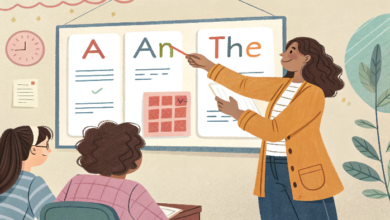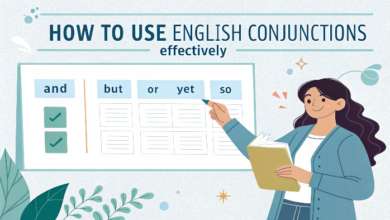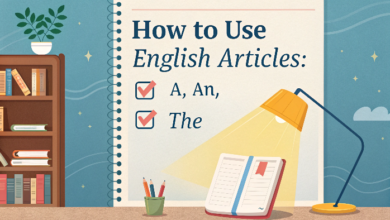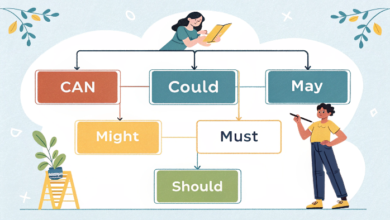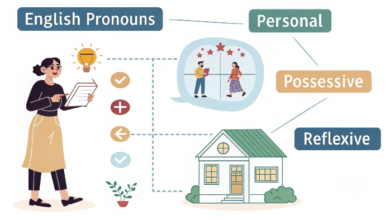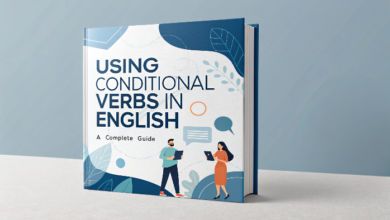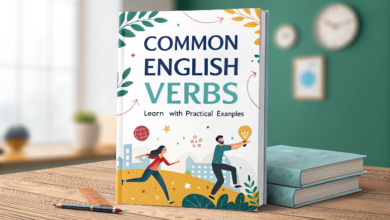A Complete Guide to English Prepositions: From Basic to Advanced Usage

A Complete Guide to English Prepositions: From Basic to Advanced Usage
Prepositions are one of the most important and frequently used parts of speech in English. They help establish relationships between different elements in a sentence,
such as time, location, direction, and manner. Mastering prepositions is essential for achieving fluency in both written and spoken English. Whether you’re just starting to learn English or aiming to polish your grammar skills, this complete guide will help you understand prepositions from the basics to advanced usage.
What Are Prepositions
A preposition is a word that links a noun, pronoun, or phrase to another word in the sentence. Prepositions usually indicate the location, direction, time, or manner of an action or event.
Examples of Prepositions
Location: in, on, at, under, above
Time: at, in, on, before, after
Direction: to, toward, into, out of
Manner: by, with, like, as
Basic Prepositions: Understanding Their Function
Let’s start with a few simple and common prepositions that are used in everyday sentences.
a. Prepositions of Place
These prepositions indicate where something is located.
In: Used for enclosed spaces or places.
Example: The keys are in the drawer.
On: Used for surfaces or flat objects.
Example: The book is on the table.
At: Used for specific locations or points.
Example: I’ll meet you at the park.
b. Prepositions of Time
These prepositions indicate when something happens.
In: Used for months, years, seasons, and long periods of time.
Example: She was born in March.
On: Used for specific days or dates.
Example: We have a meeting on Monday.
At: Used for exact times.
Example: The train arrives at 5 PM.
c. Prepositions of Direction
These prepositions show where something is moving toward.
To: Indicates movement toward a specific destination.
Example: I’m going to the store.
Into: Indicates movement inside something.
Example: The dog jumped into the pool.
Out of: Indicates movement from the inside to the outside.
Example: She walked out of the room.
Intermediate Prepositions: Exploring More Complex Usage
Now, let’s move on to prepositions that are used in more complex ways.
a. Prepositions of Manner
These prepositions indicate how something is done.
By: Indicates the means or method of doing something.
Example: I traveled by car.
With: Indicates the tool or instrument used.
Example: She cut the paper with scissors.
Like: Used for comparison.
Example: He acts like his father.
b. Prepositions of Cause, Reason, or Purpose
These prepositions show why something happens.
For: Indicates the reason or purpose behind an action.
Example: I bought this gift for you.
Because of: Indicates the cause of something.
Example: The game was canceled because of the rain.
c. Prepositions of Comparison
These prepositions show the relationship between two things in terms of similarity or difference.
As: Used for similarity or equality.
Example: She works as a teacher.
Than: Used to show difference in comparison.
Example: He is taller than I am.
Advanced Prepositions: Exploring Complex Structures
At this level, prepositions can form part of phrasal verbs, expressions, and more complicated sentence structures.
a. Prepositional Phrases
A prepositional phrase consists of a preposition followed by a noun or pronoun (its object). These phrases are commonly used to add more detail to a sentence.
Example: I live in a small town.
Example: She traveled with her friends.
b. Phrasal Verbs with Prepositions
In many cases, prepositions combine with verbs to form phrasal verbs, which have a different meaning than the verb alone.
Look after: To care for.
Example: She looks after her younger brother.
Give up: To quit or stop doing something.
Example: He decided to give up smoking.
c. Prepositions in Idiomatic Expressions
Certain prepositions appear in common idiomatic expressions that do not always follow the literal meaning.
In charge of: Responsible for something.
Example: She is in charge of the project.
At risk: In danger.
Example: The wildlife is at risk of extinction.
For more, go to the next page

